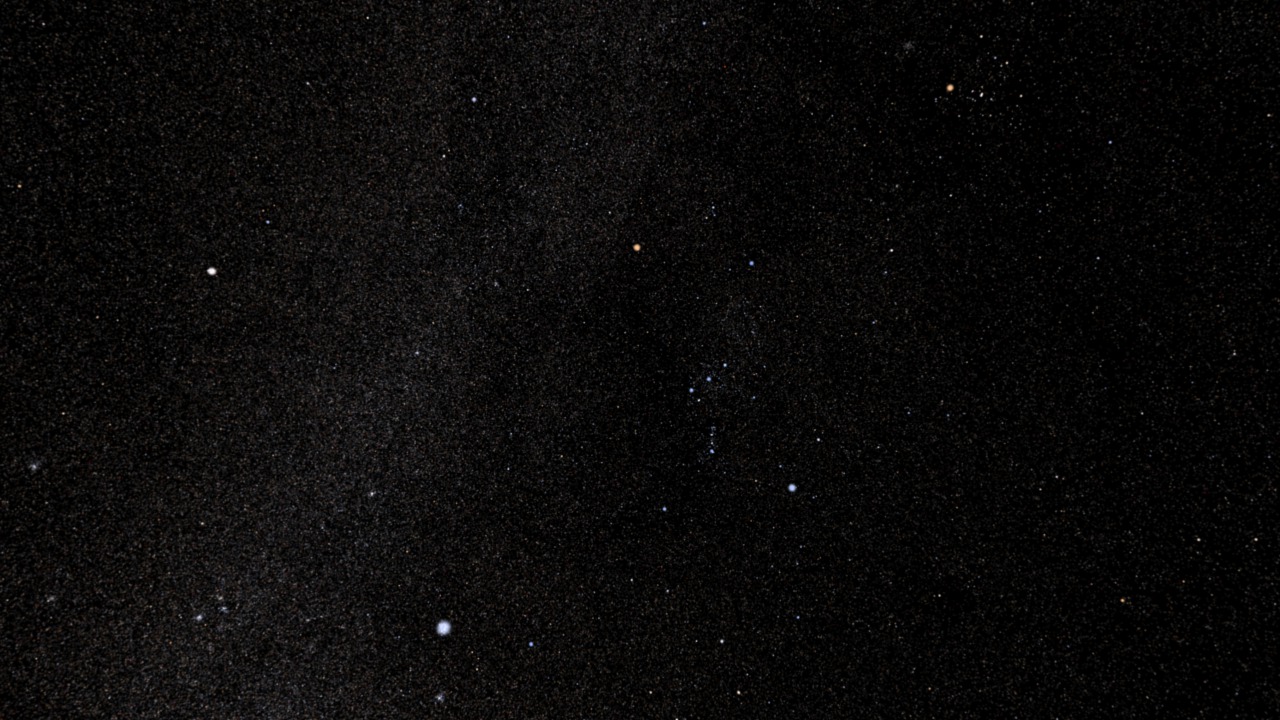A newer version of this visualization is available.
The Alternative Night Sky - Another Time - Another Place

A low-magnitude threshold version of the skymap. The threshold magnitude is 3.0 so the galactic disk is very faint. Good for when you just want the brighter stars and have a wide field of view.
Periodically our group needs to generate visualizations of another location in the galaxy, or another time in the galaxy. For context to make the view more appealing, we might like to include background stars - but showing our standard view of the night sky from Earth just seems not quite right. And then there are some (like this author) who sometimes want to make a big deal about such details, so why don't I just solve the problem.
This texture is built from the Tycho Catalog skymap. The same stars are included, but the brighter stars are repositioned by computing a random offset from their usual positions. This alters the star patterns to less recognizable forms while keeping groups of fainter stars, such as the Milky Way, intact. This technique does keep a number of the dust lanes in the galactic disk intact.

A higher-magnitude threshold version of the skymap. The threshold magnitude is 4.0 so the galactic plane is fainter and bright stars are smaller than the map above. Better for smaller fields-of-view.

A high-magnitude threshold (almost all stars visible to the naked eye) version of the skymap. The threshold magnitude is 5.0 so the galactic plane is very bright and bright stars are large. Best for smaller camera fields of view to show fainter stars.
Credits
Please give credit for this item to:
NASA's Scientific Visualization Studio
-
Visualizers
- Tom Bridgman (Global Science and Technology, Inc.)
- Ernie Wright (USRA)
-
Technical support
- Ian Jones (ADNET Systems, Inc.)
- Laurence Schuler (ADNET Systems, Inc.)
Release date
This page was originally published on Tuesday, August 1, 2017.
This page was last updated on Wednesday, May 3, 2023 at 1:47 PM EDT.
Series
This page can be found in the following series:Datasets used
-
Hipparcos Catalogue [Hipparcos: Telescope]
ID: 549This dataset can be found at: http://www.rssd.esa.int/index.php?project=HIPPARCOS
See all pages that use this dataset -
Tycho Catalogue (Tycho 2 Catalogue) [Hipparcos: Telescope]
ID: 550This dataset can be found at: http://archive.eso.org/ASTROM/
See all pages that use this dataset
Note: While we identify the data sets used on this page, we do not store any further details, nor the data sets themselves on our site.

